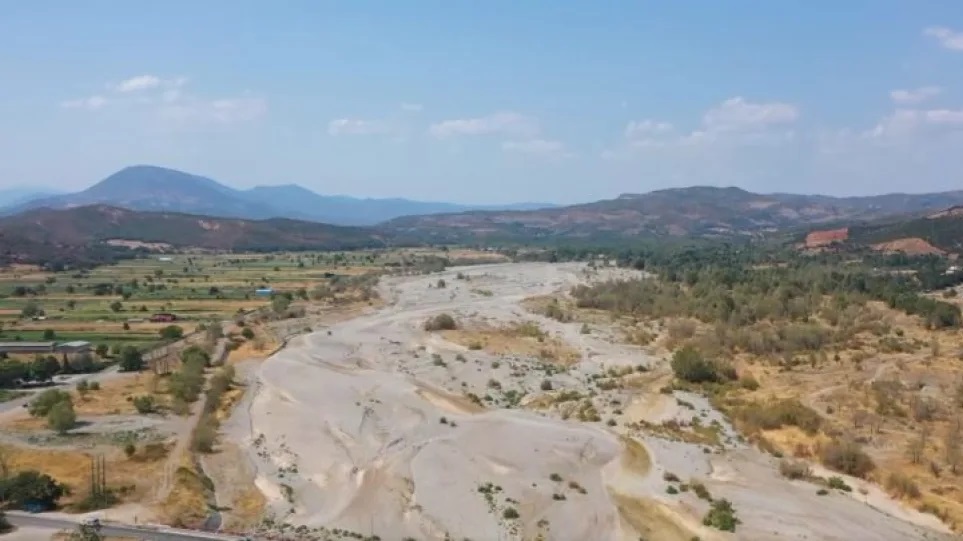
A large part of the Pineios River in Thessaly, Central Greece, has completely dried out, officials announced on Wednesday.
Regional Governor Costas Agorastos said that “there is not a single drop of water at a length of 25 km (15.5 miles), from the springs to the bridge of Dialektos in Trikala.”
“Nature is warning us. It tells us to act now. It is time for rational water management,” Agorastos said according to the regional daily Eleftheria.
The Pineios River flows from the Pindus mountains through the Thessalian plain and empties into the Aegean Sea, northeast of the Vale of Tempe, near Stomio, Greece. It creates a large delta, well known for its beauty and for the presence of many animal species who are protected by international environmental treaties.
The existence of primitive Paleolithic civilization, as far back as 250,000 years ago, is demonstrated by the stone tools found at the Pineios delta. That part of the estuary of the Pinios (in eastern and northern Thessaly) was inhabited by the Pelasgians (Aeolians), and later on, the Dorians settled along the slopes of Olympus and Ossa, on either side of the estuary of the river.
In paleolithic times it was also the home of hippopotamuses, bison and even elephants, according to geologist/paleontologist and professor Athanassios Athanassiou.
His recent study, entitled “The Paleolithic World of the Pineios,” describes numerous fossilized remains of mammals discovered in the Pineios River basin which are between 30,000 and 45,000 years old.
The large animals, some of which are now only found in Africa and Asia, roamed the river valley during the Upper Pleistocene era, which began 180,000 years ago and includes a vast swath of human history, ending just 10,000 years ago, when humans had begun to form settlements.
The total length of the river is 205 km (127 miles). Its source is near the village Malakasi, on the eastern slope of the Pindus’ main range, east of Metsovo. The Meteora region and the city of Larissa lie along the Pineios. The city of Trikala lies on its tributary, the Lithaios.
Climate change along the Pineios river
A recent report by Greek scientists concluded that the overexploitation of water supplies through abstraction, hydrological alterations, and the construction of dams, barriers and locks are key pressures in the Pineios basin, largely driven by agricultural activities and climate change.
The results indicate a general trend according to which precipitation is decreasing while temperatures are increasing.
According to the regional climate models used by the scientists for the periods 2021–2100, on average, annual precipitation change for the period 2021–2100 was about − 80 mm, ranging between − 149 and + 35 mm, while the corresponding change for temperature was an increase of 2.81 °C, ranging between 1.48 and 3.72 °C.
The investigation of potential impacts to the area’s water resources demonstrates that water availability is expected to be significantly decreased in the already water-stressed Pineios river, the report concludes.
The Mediterranean has been identified as the most vulnerable European region in terms of climate change impacts. Most scientists agree that there will be an increasing upward trend in future temperatures and a reduction of precipitation, both of which are expected to significantly affect water resource availability.
See all the latest news from Greece and the world at Greekreporter.com. Contact our newsroom to report an update or send your story, photos and videos. Follow GR on Google News and subscribe here to our daily email!



